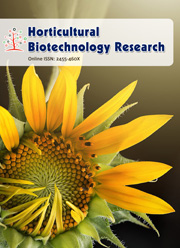<em>Rhinosporidium seeberi</em> proven as a fungus for the first time after a century since its discovery
Abstract
The 18S rRNA gene sequencing of a pure microorganism isolated in pure culture from human rhinosporidiosis cases coded UMH.48 and preserved at 4oC, and, the fungal extracts of biopsy from new cases of nasal rhinosporidiosis were done. Both the sequences were compared for the presence any identical regions by BLAST tool. Astonishingly both the sequences showed 100% identity with each other. The sequences were further compared with the sequences present in NCBI database, followed by sequences of specific organisms like Mesomycetozoa sp and Synchytrium sp. Based on the morphological features, life cycle and BLAST analysis the organism UMH.48 was categorized as a Fungus. The sequences of UMH.48 and sequences from the fungus extracts from new tissue biopsies were deposited in Genbank with accession numbers JN807465 and JN807466 respectively. This paper reports the identity of 18S rRNA sequences between the pure, preserved, isolate with those obtained from biopsies of nasal rhinosporidiosis obtained from totally new cases. Our isolate has been tentatively identified as a lower aquatic fungus with 100% alignment with Colletotrichum truncatum and Glomerulla sps and lesser score similarity with Synchytrium minutum. Yet the absence of a perfect sexual phase or any asexual fungal spores, very rare microscopic morphology, life cycle and remarkable resemblance with members of lower aquatic fungi led us to surmise (also through personal communication with NCBI, Taxonomy expert) that the isolate is a Fungus (unknown) and not an Ascomycete.Downloads
Download data is not yet available.
Published
02-03-2012
How to Cite
V, T., & M.S., L. D. (2012). <em>Rhinosporidium seeberi</em> proven as a fungus for the first time after a century since its discovery. Research in Biotechnology, 3(1). Retrieved from https://updatepublishing.com/journal/index.php/rib/article/view/2388
Issue
Section
Research Articles



 .
.